Visualizing the History of Place Through Comics and Graphic Novels
After standing for many years, historic buildings and places collect stories and tales that lay hidden in their walls, ready to be told. For those that do not survive the tests of time, who is there to tell their story, and without a physical structure how? Often these tales are cinematic, encapsulating every range of emotion, so what better way than a graphic novel to depict their stories than in a visually descriptive medium?
While in graduate school, I researched, wrote, and illustrated, “AGBANY: the birth of the historic preservation movement.” In the summer of 2022, I self-published AGBANY, akin to the DIY spirit of the individuals behind AGBANY. In the process of creating the graphic novel, I felt as though as I was writing a love letter to a place that I would never be able to experience except through historic newspapers, photographs, and oral histories.
As a preservationist, the graphic novel felt like an extension of the stewardship I had learned so much about during graduate school.
Graphic Novels as Stewardship
Preservation is a community-driven place-based initiative. We work to save landmarks for their historical, cultural, and visual contribution to our sense of place. This duty to be to be stewards of the built environment, takes all different forms, both direct and indirect.
Direct stewardship is often understood as rehabilitation and actions impacting the physical status of a place. Indirectly, creative interpretations such as graphic novels and comics dedicated to the history of place and historic structures are equally valid. In this case, conducting research, constructing a narrative, and illustrating these stories all serve as an act of stewardship that brings awareness while also bridging gaps of knowledge and interest.

photo by: Sydney Andrea Landers

photo by: Sydney Andrea Landers
AGBANY, Chapter Two: Taking a Stand, Pages 3 and 4. Oral histories from the New York Preservation Archive Project were used to understand the motives and drives behind the key players of AGBANY.
Graphic novels and comics bring historical narratives to the next level, challenging the educational process. Elements such as color, linework, and other stylistic decisions subconsciously add to a narrative to denote tonal or mood changes. The genre digs into the humanity of preservation: the drive, passion, and motivation of those who fight to save our built environment. Complex, primary source research can be tied together into a thrilling narrative keeping readers itching for more.
The medium is accessible. Text is formulated to be digestible within comic panels flowing quickly and naturally. The audience range (depending on the topic) covers a variety of generations, from early education to working professionals. Most importantly, it attracts a variety of readers outside of the field, who are initially attracted to the artistic facet of the medium. While not immediately interested in architecture or historic preservation, these readers may gravitate to these books due to a general appreciation for the art behind the medium.

photo by: Sydney Andrea Landers

photo by: Sydney Andrea Landers
AGBANY, Chapter Four: A Doomed Fate, Pages 3 and 4. The illustrative nature of graphic novels can bring quotes and text to a next level, denoting tone and mood changes.
The process of creating the graphic novel is akin to writing an elaborate love letter to a place one may never get to experience except, the medium captures a sense of place through images and writing. By fabricating an experience of a place that may no longer be with us, the dynamic narrative structure of graphic novels leverages a place’s chronological lifespan that immerses the reader.
To get a sense of how graphic novels play this role, below is a sampling of five graphic novels—including my own, AGBANY—that focus on place-based stories, preservation, and architectural history at different scales.
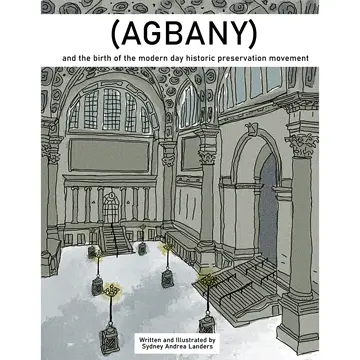
AGBANY: The Birth of the Historic Preservation Movement
by Sydney Andrea Landers
The demolition of Penn Station is loosely understood as the birth of the modern-day preservation movement, one based in activism. To frame the event, it seems fit to focus on those who led the movement in this catalyst event, The Action Group for Better Architecture in New York (AGBANY). AGBANY was an informal activism group formed by around 25 architects and preservation-minded individuals outraged with the proposed demolition of Penn Station. This organization had highly acclaimed voices such as Mies Van Der Rohe, Phillip Johnson, and Jane Jacobs on their side. “AGBANY” ties a great tale of early preservation advocacy to the hope for a future of preservation.
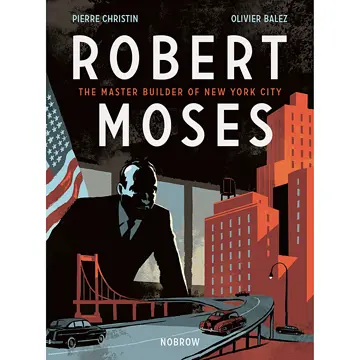
Robert Moses: The Master Builder of New York City
by Pierre Christin and Olivier Balez
From a biographical standpoint, “Robert Moses: The Master Builder of New York City” digs into the life and impact of Robert Moses on the New York City built environment and its landscape. The New York Times bestseller doesn't shy away from the less glamorous aspects of Moses’ influence on cities and is an excellent introduction to planning and New York City history for those less familiar.
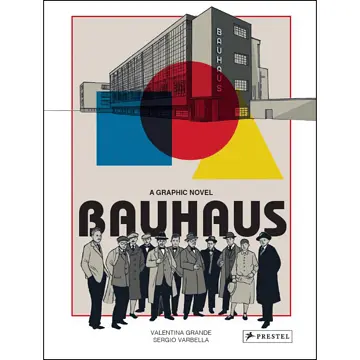
Bauhaus
by Valentina Grande and Sergio Varbella
Fresh off the press and published in May of this year, “Bauhaus” is a gesamtkunstwerk, a German phrase signifying a total work of art. From its illustrative storytelling to serene images that accompany it, this graphic novel digs into the beginnings of the Bauhaus movement and its key players. We follow along as the school moved across Europe and how it evolved accordingly as well as how it continues to influence design to this day.
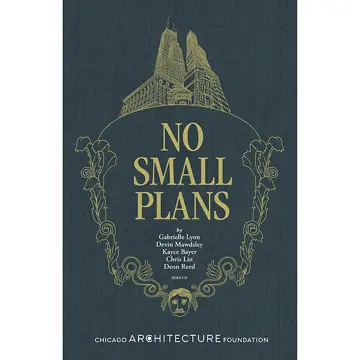
No Small Plans
by Gabrielle Lyon, Devin Mawdsley, Kayce Bayer, Chris Lin, and Deon Reed
With "No Small Plans", the Chicago Architectural Foundation created a graphic novel dedicated to the history of Chicago’s architecture and where it may be going in the future. Following children from each generation and their experiences of the built environment they are growing up within, "No Small Plans" shows a community tenderly reflecting upon its architectural heritage and how it shapes them now.
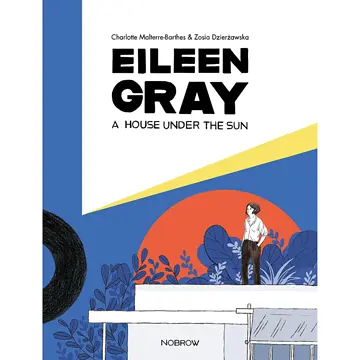
Eileen Gray: A House Under the Sun
by Charlotte Malterre-Barthes and Zosia Dzierzawska
What stories can a home truly tell? “Eileen Gray: A House Under the Sun” asks this question. In recounting the history and life of E-1027—a modernist villa in France—the graphic novel manages to refocus the spotlight onto Eileen Gray, master architect behind the modern marvel. Malterre-Barthes seeks out Gray and highlights her influence throughout E-1027, in spite of the historically overlooked impact of female designers on the world of architecture.
By purchasing any of these products using the links on this page, you'll be supporting the National Trust. Check out other ways you can support preservation as you shop, travel, and play.


